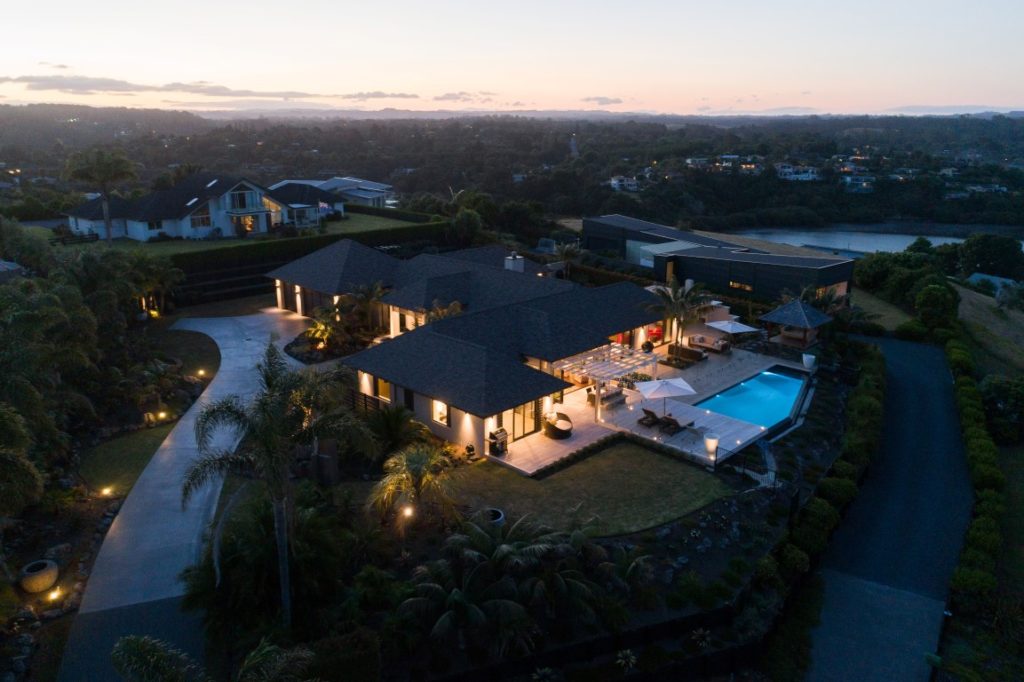Making the home fit the site, not the site fit the home. This is the most important consideration when designing a home. (we believe)
There’s nothing worse than getting a standard plan and plonking it on your site & thinking ‘she’ll be right’.
So, whether you’ve got your site or are still choosing your site it’s good to understand its background and restrictions (yes, every property in New Zealand has restrictions).
As soon as you speak to an Architect, Architectural Designer or Builder they should be able to do the required research and give you in simple English what the rules and regulations are for your site.
House Sites: The More Understandable Items
These are the things that are more often talked about when purchasing a property, and are often more associated with the ’emotional’ part of the purchase, and whether you ‘feel good’ about your site.
• Views
• Wind
• Site Access
• Services (Power, Water, Stormwater, Sewer)
• Sun & Light
• Building Platform Orientation
• Existing Landscaping
• Land Contour (Steep or Flat)
It’s always beneficial to spend time at your site before you start designing. It helps you to understand what the site feels like in different weather, where the sun is during the day & where the wind is the most persistent.

The Often Hidden, Big, Bad Rules
The below should all be considered and the restrictions noted down. Not all apply for every site:
- Consent Notices (on the Title & are Council enforced)
- Covenants (on the Title & are developer/neighbor enforced)
- Building envelope restrictions (on the Title)
- Easements (on the Title)
- Council Zoning, which dictates:
○ Maximum Height
○ Sunlight Angle Restrictions
○ Building Coverage % Maximum
○ Impermeable Surfaces % Maximum
○ Boundary Setbacks
○ # of Dwellings per Site
○ Setback from Bush
○ Maximum Earthworks Area & Volume
○ Maximum Building Sizes
○ Required Landscaping - Flood Zones
- Heritage/Archaeological Areas
- Special Overlays (Harbours, Airports, Conservation)
- Protected landform & trees
- Underground Services
- …And more…
Has your mind just gone – fuzz? We spend all day working with these so seek a professionals advice who will help you turn these items into understandable English.
If you’re purchasing a property your lawyer and the land agent should give you an explanation of these items, however oftentimes the land agent won’t know all the hidden rules, so be weary.
To get an all-encompassing view of the above you can’t just go to one place. By using a mix of the LIM, Council Maps, Regional Maps & a number of other tools a fairly good view of the restraints can be detailed.
Why do we start here?
It gives a set of parameters which the design should try to comply with. It creates a three dimensional view of the property and immediately starts crossing some options off the list.
Can I breach these rules?
Yes. Some are more difficult than others to breach and you’ve got to prove that the effects of the breach on the environment, neighbors and any other affected parties will be no more than minor. This is where you need a Resource Consent and possibly neighbors approvals.
You can learn more about Titles, Consent Notices, Covenants & Easements here.

Aim: To Design Within the Rules (if possible)
A good designer will try to design a home to fit the rules as best possible. Oftentimes its not achieveable to meet all the rules and achieve client satisfaction so a Resource Consent is needed to breach these rules.
That’s why it’s the first thing we research.
Contact our team today to discuss your project.
